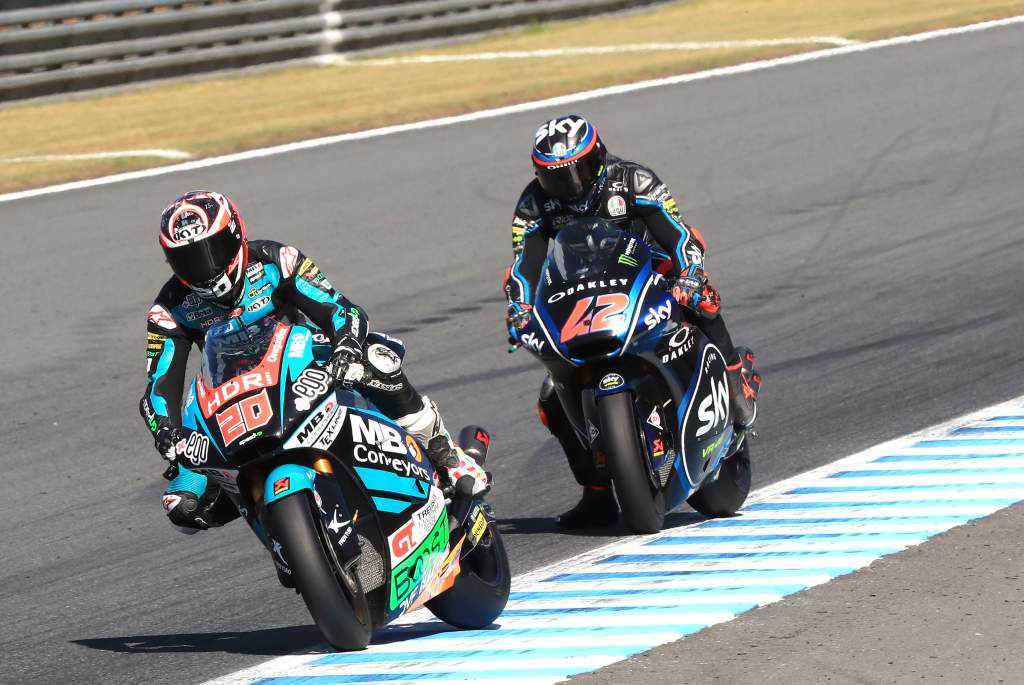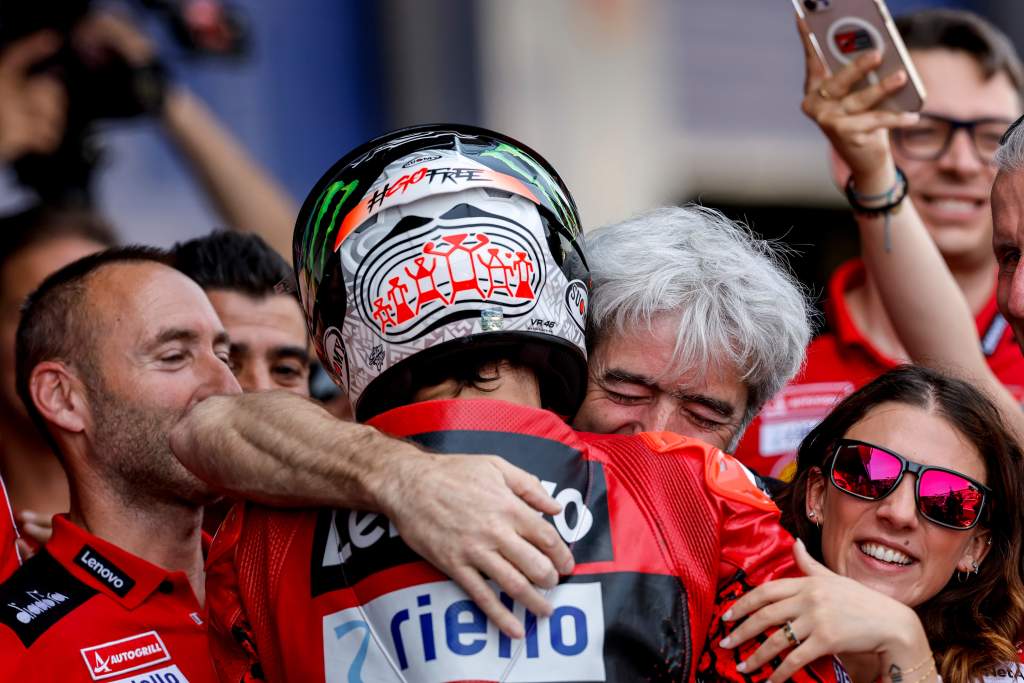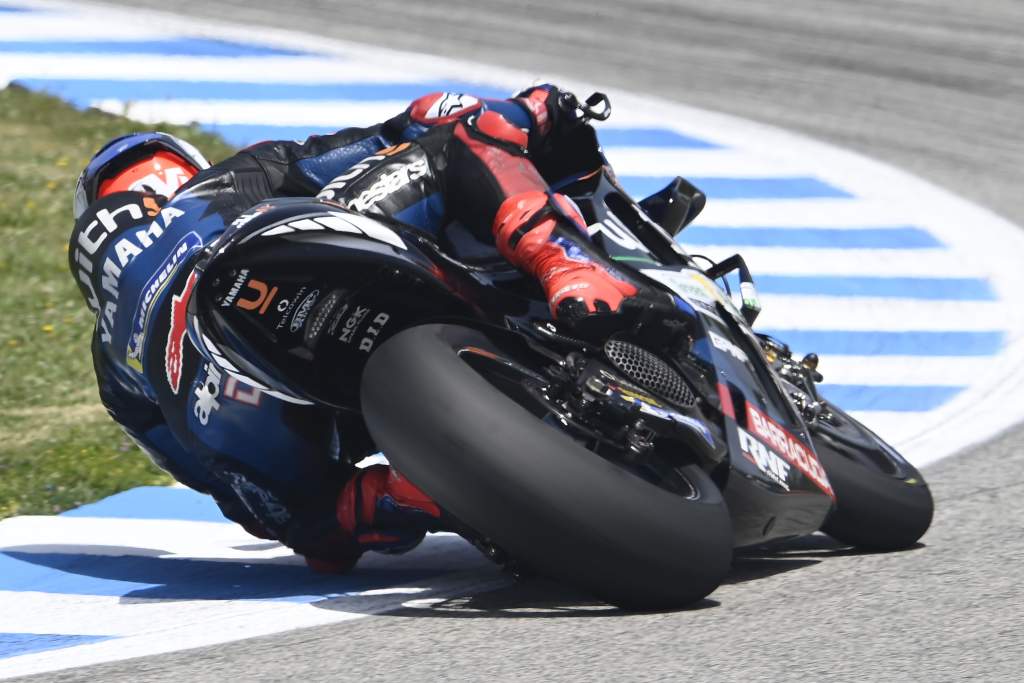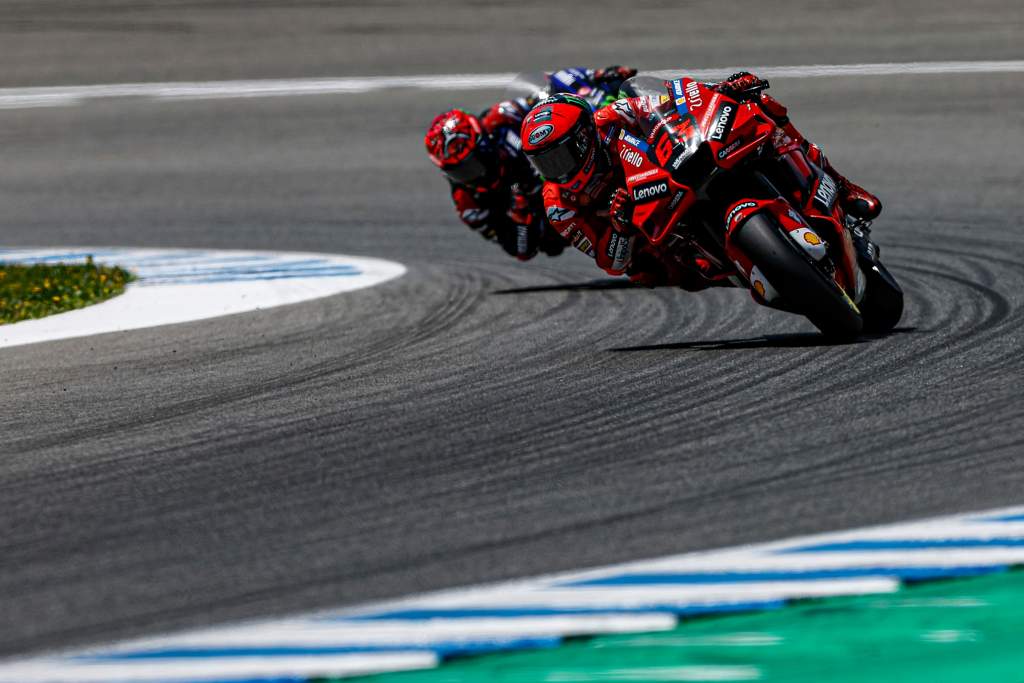Ducati Corse general manager Gigi Dall’Igna has dismissed claims suggesting that he and his team are among a number of MotoGP squads seeking an advantage by altering their tyre pressures outside the range specified by spec tyre manufacturer Michelin – something that has supposedly been overlooked by series bosses for years.
Reported in Motor Sport Magazine by veteran journalist Mat Oxley, the claim (backed up by leaked data from last weekend’s Spanish Grand Prix) is that Ducati race winner Pecco Bagnaia failed to meet the minimum specified front tyre pressure during a single lap of the 25-lap race at Jerez.
However, according to the initial report, because of the issue not being formally codified in MotoGP’s rulebook, it has instead been policed by a gentleman’s’ agreement between factories, which has led to it being largely ignored by teams association the Motorcycle Sports Manufacturers’ Association (MSMA) and the series’ technical stewards.
In the past riders have been disqualified from races in the smaller classes for falling foul of tyre pressure limits, most notably Jerez runner-up Fabio Quartararo at the 2018 Japanese Grand Prix – a penalty that ironically handed the win to rival Bagnaia.

The reason for such extreme sanctions is that running too low a pressure presents a significant safety hazard to riders, with the matter (which has huge benefits in giving an advantage in grip) believed to be behind a number of past incidents involving malfunctioning tyres in the past, according to paddock insiders.
But, with Ducati specifically singled out as the biggest beneficiary of late, Dall’Igna took the unusual step of calling a small online video call interview with a select group of journalists to discuss the allegations levelled at them – and to promptly dismiss them by stressing that the technology to monitor pressures simply isn’t accurate enough right now to allow it to be used for enforcement.
“Honestly speaking, there’s not a lot to explain,” the veteran engineer told The Race. “We are working in the MSMA now to have for the future, for next year, a reliable system to control the pressure of the tyre. At the minute, the system that everybody of us are using is not reliable.
“That means that we use different sensors, and that the system is not blind. If someone wants to, he can modify the values of the pressure. The system is not reliable enough to apply any sanctions.
“All the MSMA manufacturers are working to do a system for ’23 that is reliable and blind in order to control the pressure and to apply some sanctions if some riders or some manufacturers don’t follow the Michelin rules.”

However, according to one experienced team member inside a different factory contacted by The Race after the story broke, there’s another reason why the gentleman’s’ agreement exists that has nothing at all to do with unreliable monitoring equipment.
Instead, the real problem seems to lie in the sensitivity of Michelin’s front tyres to pressure fluctuations as they heat up and cool down during a race. Caused by the conditions in which riders find themselves racing, the different stresses caused by leading a race or following another racer create extreme swings, especially if a bike is set up expecting a different strategy.
That’s something that Dall’Igna hinted at in his explanations – and suggests it’s what may have caused Bagnaia to be below expected values in Jerez after spending the entire race leading from the front and defending from Quartararo.
“If it is relatively easy for the rear tyre to move within the values that Michelin prescribes for us,” he explained, “it is extremely complicated for the front tyre. The tyre pressure, which depends on the temperature, depends very much on whether you are riding in the slipstream or not.
“When one expects to slipstream a race, they tune the system in a certain way. On the other hand, if one thinks that he will drive alone in the race, he adjusts the parameters in a different way. But if the opposite then happens, the values are too high.
“For example, if someone adjusts tyre pressure for a race alone, but ends up behind others, they risk over-inflation and a fall. Because from a certain value the grip decreases and it becomes dangerous.”
However, while that creates an issue with front tyre pressure fluctuating, similar conditions don’t cause the same changes in the rear – and with the potential for a spectacular rear failure causing an even higher risk of a serious crash, that’s something that MotoGP is believed to be set to clamp down on in 2023.

It was much of an issue in the Jerez race according to the information presented by Motor Sport Magazine – with only satellite Yamaha rider Andrea Dovizioso reported as beomg at or below the minimum specified rear pressure for the entire race.
It’s something that could have (if it was a calculated decision) helped to relieve the issues that he’s been having with a lack of rear grip on the M1, and which could see the RNF Yamaha team facing greater scrutiny going forward.






